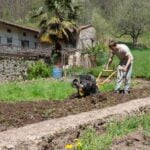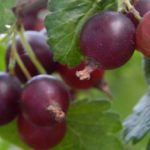California is no stranger to water scarcity, with frequent droughts putting a strain on the state’s water resources. The current situation has prompted authorities to implement stringent water restrictions to combat the crisis, affecting various aspects of daily life, including vegetable gardens. As residents navigate through these limitations, understanding the specific regulations that apply to gardening becomes essential in ensuring compliance while still nurturing a thriving garden.
In the midst of California’s water restrictions, vegetable gardens face unique challenges due to their need for consistent watering to support healthy plant growth. With limitations on water usage in place, gardeners must explore innovative strategies to conserve water without compromising the well-being of their crops. The importance of adapting gardening practices to align with conservation efforts is crucial not only for sustaining vegetable production but also for contributing towards alleviating the state’s water crisis.
Despite the constraints imposed by water restrictions, there are opportunities for gardeners in California to make a positive impact through mindful water management techniques. By embracing drought-resistant vegetable varieties and implementing water-saving methods like drip irrigation and mulching, individuals can reduce their garden’s water consumption significantly while still enjoying a bountiful harvest.
As we delve into the complexities of conserving water in vegetable gardens, exploring alternative watering methods such as rainwater harvesting and greywater recycling can further enhance sustainability efforts and promote environmental stewardship within local communities.
Understanding California Water Restrictions
California is no stranger to water shortages, with frequent droughts putting a strain on the state’s water resources. As a result, California has implemented various water restrictions to manage its limited supply effectively. These restrictions apply not only to residential water usage but also impact activities like maintaining vegetable gardens. Understanding these regulations is crucial for residents looking to cultivate their own produce while remaining compliant with conservation efforts.
Residential Water Usage Restrictions
The state of California has imposed specific limitations on residential water usage to combat the ongoing drought conditions. This includes restrictions on watering lawns, washing cars, and filling pools. For vegetable garden enthusiasts, monitoring and adjusting irrigation practices are essential to ensure that water is used efficiently and within the mandated guidelines.
Vegetable Garden Watering Regulations
In addition to general residential restrictions, there are specific guidelines in place for watering vegetable gardens. Residents are encouraged to use drip irrigation systems or handheld hoses equipped with shut-off nozzles, rather than traditional sprinklers, which can lead to excessive water waste. Furthermore, certain days and times may be designated for outdoor watering, limiting the flexibility of when gardeners can tend to their crops. Adhering to these rules is vital in supporting overall water conservation efforts in California.
Adapting Vegetable Gardening Practices
To navigate the challenges presented by California’s water restrictions concerning vegetable gardens, gardeners must embrace sustainable practices such as mulching, using drought-resistant plants, and exploring alternative watering methods like rainwater harvesting. By adopting these strategies, individuals can continue to enjoy cultivating their favorite vegetables while minimizing their environmental impact and contributing to the conservation of precious water resources in the state.
Importance of Conserving Water in Vegetable Gardens
Amidst the ongoing water shortage crisis in California, it is vital for residents to understand and adhere to the water restrictions in place, including those that directly impact vegetable gardens. The restrictions aim to conserve water and ensure sustainable use of this precious resource.
One of the key areas where individuals can make a significant impact is in their own backyard vegetable gardens. By adopting water-saving practices and choosing drought-resistant vegetable varieties, gardeners can continue to cultivate healthy produce while minimizing their water usage.
To effectively navigate the challenges posed by California’s water restrictions on vegetable gardens, it is crucial for gardeners to prioritize water conservation. Conserving water not only helps mitigate the effects of drought but also promotes sustainable gardening practices that benefit both the environment and the community. By optimizing irrigation methods, selecting appropriate plants, and implementing efficient watering techniques, individuals can reduce their overall water consumption without compromising the health and productivity of their vegetable gardens.
In order to support California’s efforts in water conservation and maintain thriving vegetable gardens despite the restrictions, gardeners can implement various strategies. Some effective ways to conserve water in vegetable gardens include:
- Utilizing drip irrigation systems to deliver water directly to plant roots
- Applying mulch around plants to retain moisture and prevent evaporation
- Timing watering sessions during early morning or late evening hours to minimize evaporation
By incorporating these practices into their gardening routine, individuals can play a significant role in preserving California’s limited water resources while still enjoying the benefits of homegrown produce.
Drought-Resistant Vegetable Varieties
In response to the ongoing water shortage situation in California, many residents are facing tough decisions on how to maintain their vegetable gardens while complying with water restrictions. One of the key strategies for gardeners in this challenging environment is to choose drought-resistant vegetable varieties. By selecting plants that require less water and are well-suited for Californian gardens, gardeners can help conserve precious water resources while still enjoying a bountiful harvest.
To assist gardeners in making informed choices, here are some drought-resistant vegetable varieties that thrive in California’s climate:
- Cherry tomatoes: These small, flavorful tomatoes are known for their resilience and ability to produce even in dry conditions.
- Zucchini: This versatile vegetable is not only drought-tolerant but also produces abundantly throughout the season.
- Swiss chard: With its colorful stems and nutritious leaves, Swiss chard is a hardy green that can withstand limited watering.
- Peppers: Whether sweet or spicy, peppers are a great choice for low-water gardening due to their minimal water requirements.
- Beans: Both bush and pole bean varieties can be successfully grown with less frequent watering, making them ideal for water-conscious gardeners.
By incorporating these drought-resistant vegetable varieties into their garden plans, Californian residents can reduce their overall water usage while still enjoying fresh produce from their own backyard. Furthermore, these plants often require less maintenance and attention, making them an excellent choice for busy individuals looking to cultivate sustainable gardens despite the challenging circumstances surrounding California water restrictions.
Water-Saving Gardening Techniques
Implementing Drip Irrigation Systems
One effective way to reduce water usage in vegetable gardens, especially in a state like California with water restrictions, is by implementing drip irrigation systems. Drip irrigation delivers water directly to the base of plants, minimizing evaporation and runoff.
This method ensures that water reaches the roots where it is needed most, promoting healthier plant growth while using water more efficiently. By installing a drip irrigation system in your vegetable garden, you can significantly lower your water consumption and help conserve this precious resource.
Utilizing Mulching Techniques
Mulching is another essential practice for reducing water usage in vegetable gardens and maintaining soil moisture levels. Mulch acts as a protective barrier on the soil’s surface, preventing evaporation and reducing water loss through runoff.
Additionally, mulch helps regulate soil temperature, suppress weeds, and improve overall soil health. By applying a layer of organic mulch around your vegetable plants, you can retain moisture longer, minimize the need for frequent watering, and support sustainable gardening practices in line with California’s water restrictions.
Practicing Smart Watering Habits
In addition to drip irrigation and mulching techniques, practicing smart watering habits is crucial for conserving water in vegetable gardens during times of drought and restrictions. It is essential to monitor the moisture levels of your soil regularly and adjust watering schedules based on weather conditions and plant needs. Watering deeply but less frequently encourages deep root growth and reduces surface evaporation.
Consider collecting rainwater or utilizing greywater from household sources for watering your vegetable garden as alternative methods to further reduce reliance on traditional freshwater sources while still supporting healthy plant growth. By incorporating these water-saving gardening techniques into your routine, you can play a vital role in preserving California’s limited water resources while enjoying a thriving vegetable garden.
Alternative Watering Methods
California is facing a severe water shortage, leading to the implementation of water restrictions to conserve this valuable resource. These restrictions extend to vegetable gardens, where individuals are encouraged to find innovative ways to maintain their crops while minimizing water usage. In light of these limitations, gardeners in California must explore alternative watering methods to sustain their vegetable gardens effectively.
One practical approach to reduce water consumption in vegetable gardens is rainwater harvesting. By collecting rainwater and storing it for later use, gardeners can decrease their reliance on traditional water sources. This method not only helps conserve water but also provides plants with natural nutrients that may be beneficial for their growth. Additionally, utilizing rainwater can contribute to reducing the overall demand on municipal water supplies, supporting broader conservation efforts in the state.
Another creative way to address California’s water restrictions in vegetable gardens is through greywater recycling. Greywater refers to lightly used household water from activities like laundry or dishwashing, which can be repurposed for watering plants.
While certain precautions need to be taken when using greywater, such as avoiding direct contact with edible parts of vegetables, it offers a sustainable solution for irrigating gardens without solely relying on freshwater sources. By incorporating greywater recycling into their gardening practices, Californian residents can significantly reduce their environmental impact and contribute to preserving the state’s limited water resources.
| Rainwater Harvesting | Greywater Recycling |
|---|---|
| Reduces reliance on traditional water sources | Repurposes lightly used household water |
| Provides natural nutrients for plants | Sustainable solution for irrigation |
| Supports broader conservation efforts | Helps reduce environmental impact |
Community Resources for Water Conservation
California is facing a significant water shortage, leading to strict water restrictions imposed on residents, including those with vegetable gardens. These restrictions are crucial in order to conserve precious water resources and ensure that essential needs are met. Gardeners across the state must be aware of the limitations placed on watering practices to contribute to overall water conservation efforts. It is essential for vegetable garden owners to understand and abide by these restrictions to support sustainable water usage.
In response to the California water restrictions affecting vegetable gardens, many gardeners are seeking ways to adapt their gardening practices while still nurturing their plants effectively. One key aspect of complying with these restrictions is exploring drought-resistant vegetable varieties that require less water compared to traditional plants. By selecting these specific varieties, gardeners can continue to grow healthy vegetables while reducing overall water consumption. Some examples of drought-resistant vegetables include tomatoes, peppers, and zucchini, among others.
In addition to choosing drought-resistant vegetable varieties, employing water-saving gardening techniques can further aid in complying with California’s water restrictions for vegetable gardens. Practices such as drip irrigation systems, which deliver targeted amounts of water directly to plant roots, can significantly reduce waste and promote efficient use of water.
Mulching around plants can also help retain soil moisture and minimize evaporation, allowing gardeners to use less water overall while maintaining a thriving vegetable garden. By adopting these strategies along with being attentive to the specific watering guidelines outlined in the restrictions, gardeners can play a vital role in conserving California’s limited water resources.
| Vegetable Variety | Water Usage |
|---|---|
| Tomatoes | Low |
| Peppers | Moderate |
| Zucchini | Low |
Conclusion
In conclusion, the water restrictions in California have presented challenges for vegetable gardeners, but they also offer an opportunity to rethink our gardening practices and prioritize water conservation. It is crucial for residents to understand and comply with the specific regulations regarding water usage in their gardens to contribute to statewide efforts in preserving this precious resource.
Conserving water in vegetable gardens not only aligns with California’s sustainability goals but also ensures the health and productivity of the crops. By selecting drought-resistant vegetable varieties and implementing water-saving techniques like drip irrigation and mulching, gardeners can nurture thriving plants while minimizing water wastage. These small changes can make a significant impact collectively, especially in regions facing severe drought conditions.
Furthermore, communities play a vital role in supporting individuals who seek to comply with water restrictions in their vegetable gardens. Through access to resources like local programs, workshops, and initiatives focused on water conservation, gardeners can learn new approaches, share experiences, and contribute to a more sustainable future for California.
By adapting our vegetable gardening practices to prioritize water efficiency and conservation, we not only protect our environment but also ensure the long-term viability of growing fresh produce in this challenging climate.
Frequently Asked Questions
What Are the Watering Requirements for Vegetables?
Vegetables have varying watering requirements depending on the type of plant and its stage of growth. Generally, vegetables need about 1-2 inches of water per week, either through rainfall or irrigation. It is important to water deeply but infrequently to encourage deep root growth and prevent diseases caused by too much moisture.
Can You Water Your Garden in California?
Yes, you can water your garden in California, but it’s important to follow any water restrictions that may be in place due to drought conditions. California has faced water scarcity issues in recent years, leading to regulations on outdoor watering practices.
It is advisable to use efficient watering methods like drip irrigation systems and water during early morning or late evening hours to reduce evaporation losses.
What Is the New Water Rule in California?
The new water rule in California aims at promoting sustainable water usage amid ongoing drought conditions in the state. This rule includes restrictions on the frequency and schedule of outdoor watering, prohibitions on hosing down driveways or sidewalks, and guidelines for efficient irrigation practices.
Californian residents are encouraged to conserve water by fixing leaks promptly and using water wisely both indoors and outdoors.

If you’re looking to get into vegetable gardening, or are just looking for some tips on how to make your current garden better, then you’ve come to the right place! My name is Ethel and I have been gardening for years. In this blog, I’m going to share with you some of my best tips on how to create a successful vegetable garden.





